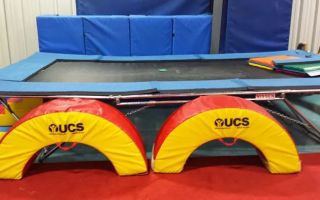Muay Thai Footwork for Quick Movements: Enhance Your Speed and Agility
- 1. Introduction to Muay Thai Footwork
- 2. Importance of Footwork in Muay Thai
- 3. Key Muay Thai Footwork Techniques for Quick Movements
- 4. How Footwork Improves Your Defensive and Offensive Game
- 5. Real-Life Application and Effectiveness of Footwork
- 6. Getting Started with Muay Thai Footwork
- 7. Why Choose Humble Challenger for Your Muay Thai Training
1. Introduction to Muay Thai Footwork
Muay Thai, often referred to as the "Art of Eight Limbs," is a dynamic martial art that combines punches, kicks, elbows, and knees. However, one of the most important, yet often overlooked aspects of Muay Thai is its footwork. Proper footwork is essential for creating quick movements, maintaining balance, and executing effective strikes during both offensive and defensive situations.
Footwork in Muay Thai enables fighters to move quickly in and out of range, evade strikes, and position themselves for powerful attacks. By mastering footwork, fighters not only improve their speed and agility but also their overall effectiveness in the ring. In this article, we will explore the significance of Muay Thai footwork and the key techniques used to enhance quick movements.
2. Importance of Footwork in Muay Thai
In Muay Thai, footwork is not just about moving from one point to another; it’s about controlling your positioning, ensuring balance, and creating opportunities to attack. Whether you're launching a combination of strikes or defending against an opponent, footwork dictates how efficiently you can move and react to the situation.
Good footwork allows you to maintain a safe distance from your opponent, avoid strikes, and get into optimal positions to land powerful blows. It helps you conserve energy by moving efficiently and prevents you from becoming an easy target. When combined with other elements of Muay Thai such as clinching and striking, footwork forms the foundation of a solid and well-rounded fighting strategy.
Without solid footwork, even the most skilled fighter may struggle to maintain their rhythm and precision. This is why training footwork is often one of the first steps in Muay Thai training, especially for beginners looking to improve their speed and agility in the ring.
3. Key Muay Thai Footwork Techniques for Quick Movements
There are several key footwork techniques in Muay Thai that help fighters move quickly and efficiently. These techniques are crucial for both attack and defense. Let’s take a look at the most important ones:
- Step and Slide: This technique involves stepping with one foot while sliding the other to follow, allowing you to move quickly in any direction. It’s ideal for closing the distance between you and your opponent or for evading a strike.
- Pivot: The pivot allows a fighter to quickly change angles while maintaining balance. By pivoting on the ball of one foot, you can easily move around your opponent, positioning yourself for a more favorable strike.
- Switch Step: The switch step is commonly used to change stances, from orthodox to southpaw or vice versa, while maintaining control of your opponent. It allows you to quickly attack from a different angle and catch your opponent off guard.
- Back Step: The back step is an essential defensive footwork technique. By stepping backward, you can create space between you and your opponent, making it harder for them to land a successful strike. It’s important to combine this with head movement to ensure you’re not an easy target.
- Circle Step: The circle step involves moving around your opponent in a circular motion to maintain control of the fight. This technique is effective for maintaining distance, staying out of your opponent’s striking range, and setting up your own attack.
Mastering these techniques allows you to move with speed and efficiency, helping you stay one step ahead of your opponent in every aspect of the fight.
4. How Footwork Improves Your Defensive and Offensive Game
Footwork is critical for both offensive and defensive strategies in Muay Thai. The ability to move quickly and smoothly allows you to transition seamlessly between defense and offense, giving you an edge in any fight.
Defensively, proper footwork helps you evade strikes, maintain distance, and avoid being cornered. By using quick movements like the back step or pivot, you can avoid your opponent’s attacks while positioning yourself for a counter-strike. The faster and more fluid your footwork, the harder it is for your opponent to land a hit.
Offensively, footwork enables you to close the distance rapidly and strike from unexpected angles. By moving in quickly with the step and slide or circling around your opponent, you can create openings for punches, elbows, and knee strikes. A well-timed and controlled approach using footwork makes your strikes more effective and harder for your opponent to defend against.
Overall, mastering Muay Thai footwork gives you the flexibility to adapt to any situation, helping you dominate both defensive and offensive exchanges in the ring.
5. Real-Life Application and Effectiveness of Footwork
Boxers and Muay Thai fighters alike have praised the effectiveness of good footwork in real-life combat situations. For example, in a recent Muay Thai match between two highly skilled competitors, one fighter demonstrated superior footwork by constantly pivoting and using the step and slide technique to evade strikes. This allowed them to stay out of danger while landing powerful counter-attacks.
Another example comes from a famous Muay Thai coach, who shares how effective footwork has helped his fighters excel in competitions. Through rigorous footwork drills, his athletes have been able to reduce their opponent’s ability to close the distance, allowing them to maintain control of the fight.
These real-life examples show that footwork is more than just a training tool—it's a vital skill that can make the difference between winning and losing in combat sports like Muay Thai.
6. Getting Started with Muay Thai Footwork
If you’re new to Muay Thai or looking to improve your footwork, it’s important to start with the basics. Here’s how to get started:
- Work on Balance: Before focusing on speed, ensure that you have a solid stance and proper balance. This is essential for quick movements and for maintaining control during a fight.
- Practice Basic Movements: Start with simple drills like step and slide, pivots, and back steps. Slowly increase the speed as you gain more confidence in your movements.
- Incorporate Footwork into Sparring: Once you’re comfortable with the basics, begin incorporating footwork into your sparring sessions. This will help you get used to using footwork in a dynamic and competitive environment.
- Consistency is Key: Like any skill, improving your footwork requires consistent practice. Dedicate time each week to focus on footwork drills and gradually challenge yourself with more complex movements.
With time and dedication, you’ll be able to use Muay Thai footwork to enhance your speed and agility, giving you a significant advantage in the ring.
7. Why Choose Humble Challenger for Your Muay Thai Training
If you’re looking to enhance your Muay Thai skills, including footwork, Humble Challenger offers expert training programs designed to improve your technique, speed, and agility. Our experienced instructors will help you master the fundamentals of Muay Thai footwork and incorporate it into your fighting style.
Whether you’re a beginner or an experienced fighter, our tailored programs will help you take your Muay Thai skills to the next level. Visit Humble Challenger today to learn more and start improving your Muay Thai footwork!

































